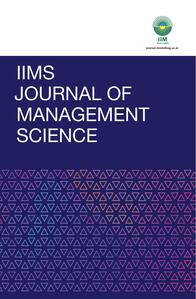
Creative Commons Non Commercial CC BY-NC: This article is distributed under the terms of the Creative Commons Attribution-NonCommercial 4.0 License (http://www.creativecommons.org/licenses/by-nc/4.0/) which permits non-Commercial use, reproduction and distribution of the work without further permission provided the original work is attributed.
As I picked up the latest book by Mansoor Khan, ONE: The Story of the Ultimate Myth, I was not quite sure what to expect. Some time back he had politely expressed his inability to come to IIM Shillong as he was busy writing this book and he had graciously spent some time giving me an insight to the weave of the book. But like all good storytellers, he ended the conversation just when my curiosity was at its peak. So, in a sense, I was waiting to lay my hands on it. I immediately ordered it, the moment he called me to say the book was out.
What a book it turned out to be! A mere 147 pages and a font was easy on the eyes, the style typically Mansoor Khan. He decided to take headlong the existential crisis of the modern world and its flawed growth model. But this was not done, as is normally done through a collation of bland data and facts but through a storyline that is supposed to be fiction. But for a world that is living through a timeline that has seen fact emerge stranger than fiction, the book skilfully succeeds in delivering its message in a profound manner. The contrast between the innate logic of how Tribal societies organized themselves and lived in harmony with nature against the modern man’s intoxication with the opiate of perpetual growth and his frantic race for more. This is the cause of disharmony in the world and lays the foundation for its inevitable doom. As it were, the only way to achieve growth of the exponential kind is to ensure higher and greater levels of consumption. To do that would require more production which in turn would require greater resources and more raw materials. But in a finite world that is impossibility. This is sought to be overcome with the use of technological innovations.
The book uses two primary characters in the narrative: Dr Abhay Rao, a genetic engineer, and Ms Sonal, a sociology professor. The classroom lectures of Sonal regarding the true meaning of development and the wanton destruction and resource imbalance unleashed by the present model juxtaposed with the contrary views expressed by a student make fascinating reading. Her stint as a sympathizer of a large anti-dam movement ultimately led her to aberrant social behaviour, leading to her losing her job and being administered painful electric shocks, psychiatric medication, and counselling, which are certainly heart-wrenching. So also is the story of Dr Abhay, who refused to go ahead with his advanced experiments in seed genetics as he felt that playing with nature without adequate knowledge could lead to disastrous consequences. His reticence came at a crucial moment for the GM seed company he co-founded, which led to serious personal consequences. Abhay paid the price by losing his job, his savings and his reputation, his psychiatric sessions and becoming a nobody.
The meeting of these two souls led to an unusual friendship. A friendship that saw Abhay sharing a script of a book he had written with Sonal. Through her eyes, the book is revealed to us, and in the end, you end up thinking of the story of the Emperor’s New Clothes. In that story, it needed the purity of a child to speak the truth. In the case of this book, as happens with the modern world, the speaker of the truth is painted as a dissenter and often proclaimed either insane or a threat to society for nobody can bear to hear the truth.
It is hardly surprising that the accomplished storyteller Mansoor Khan, who took film-making to another level through his Bollywood superhits like Qayamat Se Qayamat Tak, Jo Jeeta Wohi Sikander, Akele Hum Akele Tum, Josh and Jaane Tu Ya Jaane Na, should have adopted this unusual format to drive home a few home truths. The fact that he is an alumnus of such respectable institutions as IIT Bombay, Cornell University and MIT makes it apparent that he knows what he is talking about. Probably what is missing is a suggested reading list that would take the reader further on a journey he invited them to join in the first place.
ORCID iD
Sanjeeb Kakoty  https://orcid.org/0009-0003-3201-0633
https://orcid.org/0009-0003-3201-0633